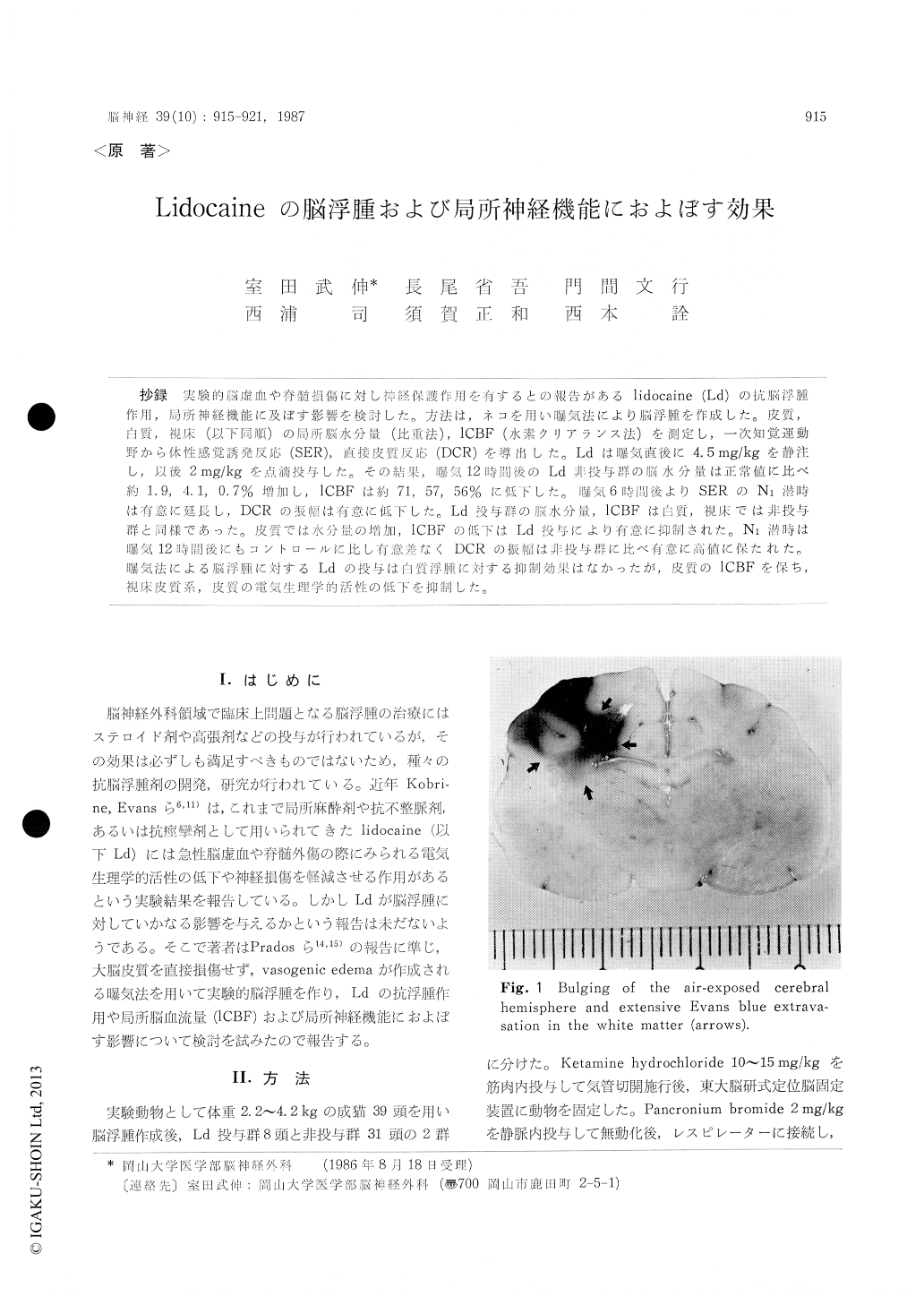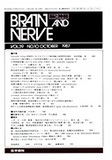Japanese
English
- 有料閲覧
- Abstract 文献概要
- 1ページ目 Look Inside
抄録 実験的脳虚血や脊髄損傷に対し神経保護作用を有するとの報告があるlidocaine (Ld)の抗脳浮腫作用,局所神経機能に及ぼす影響を検討した。方法は,ネコを用い曝気法により脳浮腫を作成した。皮質,白質,視床(以下同順)の局所脳水分量(比重法),ICBF (水素クリアランス法)を測定し,一次知覚運動野から体性感覚誘発反応(SER),直接皮質反応(DCR)を導出した。Ldは曝気直後に4.5mg/kgを静注し,以後2mg/kgを点滴投与した。その結果,曝気12時間後のLd非投与群の脳水分量は正常値に比べ約1.9,4.1,0.7%増加し,ICBFは約71,57,56%に低下した。曝気6時間後よりSERのN1潜時は有意に延長し,DCRの振幅は有意に低下した。Ld投与群の脳水分量,ICBFは白質,視床では非投与群と同様であった。皮質では水分量の増加,1CBFの低下はLd投与により有意に抑制された。N1潜時は曝気12時間後にもコントロールに比し有意差なくDCRの振幅は非投与群に比べ有意に高値に保たれた。曝気法による脳浮腫に対するLdの投与は白質浮腫に対する抑制効果はなかったが,皮質のICBFを保ち,視床皮質系,皮質の電気生理学的活性の低下を抑制した。
Recently lidocaine (Ld) has been reported to have beneficial effects on neural suppression caused by experimental cerebral ischemia or spinal cord injury. In this paper, the effects of Ld on brain edema, local cerebral blood flow (ICBF), and neural function in the thalamocortical and cortical structures were experimentally studied.
Vasogenic brain edema was induced by exposure of the cat's cerebral surface to the air in the man-ner of Prados et al. The dura mater over the left cerebral hemisphere was resected, and the brain was exposed to room air for 12 hours. The ani-mals were divided into two groups. In the control group of 31 cats, Ld was not administered. In the treated group of 8 cats, Ld (4. 5 mg/kg) was given intravenously immediately after the beginning of the air-exposure and thereafter administered as a drip infusion at the rate of 2 mg/kg/hour.
In the untreated group, 12 hours after ex-posure, the cerebral water content measured by gra-vimetry in the cortex, white matter and thalamus increased by approximately 1.9, 4.1, 0.7%, re-spectively, compared to the control values. Local CBF measured by the hydrogen clearance method decreased to about 71, 57 and 56% of the control value, respectively. The latency of the N1 com-ponent of the somatosensory evoked response (SER) was prolonged significantly 6 hours after air-ex-posure. The amplitude of the direct cortical re-sponse (DCR) decreased significantly 6 hours after air-exposure, and became approximately 50% of the control 12 hours after exposure. Electrophysi-ological suppression shown in the prolongation of SER Ni latency and suppression of the ampli-tude of DCR were attributed to ischemia in the thalamus, white matter and cerebral cortex.
Between the two groups, there were no signi-ficant changes in the water content and 1CBF of the thalamus and white matter 12 hours after exposure. However, in the cortex, Ld significantly diminished the increase in the water content and decrease in 1CBF. Further, the latency of the SER N1 component showed no significant prolongation in the Ld-treated group even after 12 hours of air-exposure. The amplitude of DCR was also sig-nificantly higher than that in the untreated group. Twelve hours after exposure, the amplitude of DCR was approximately 80% of the control in the Ld-treated group. This beneficial effect of Ld on neuronal elctrical activity was presumably due to the stabilizing effect on the cellular mem-brane and resolution of microcirculatory distur-bance.
In conclusion, Ld shows no antiedematous effect on the white matter, whereas it improves the cortical circulation and electrophysiological activi-ties of the thalamocortical projection system and the cortex.

Copyright © 1987, Igaku-Shoin Ltd. All rights reserved.


